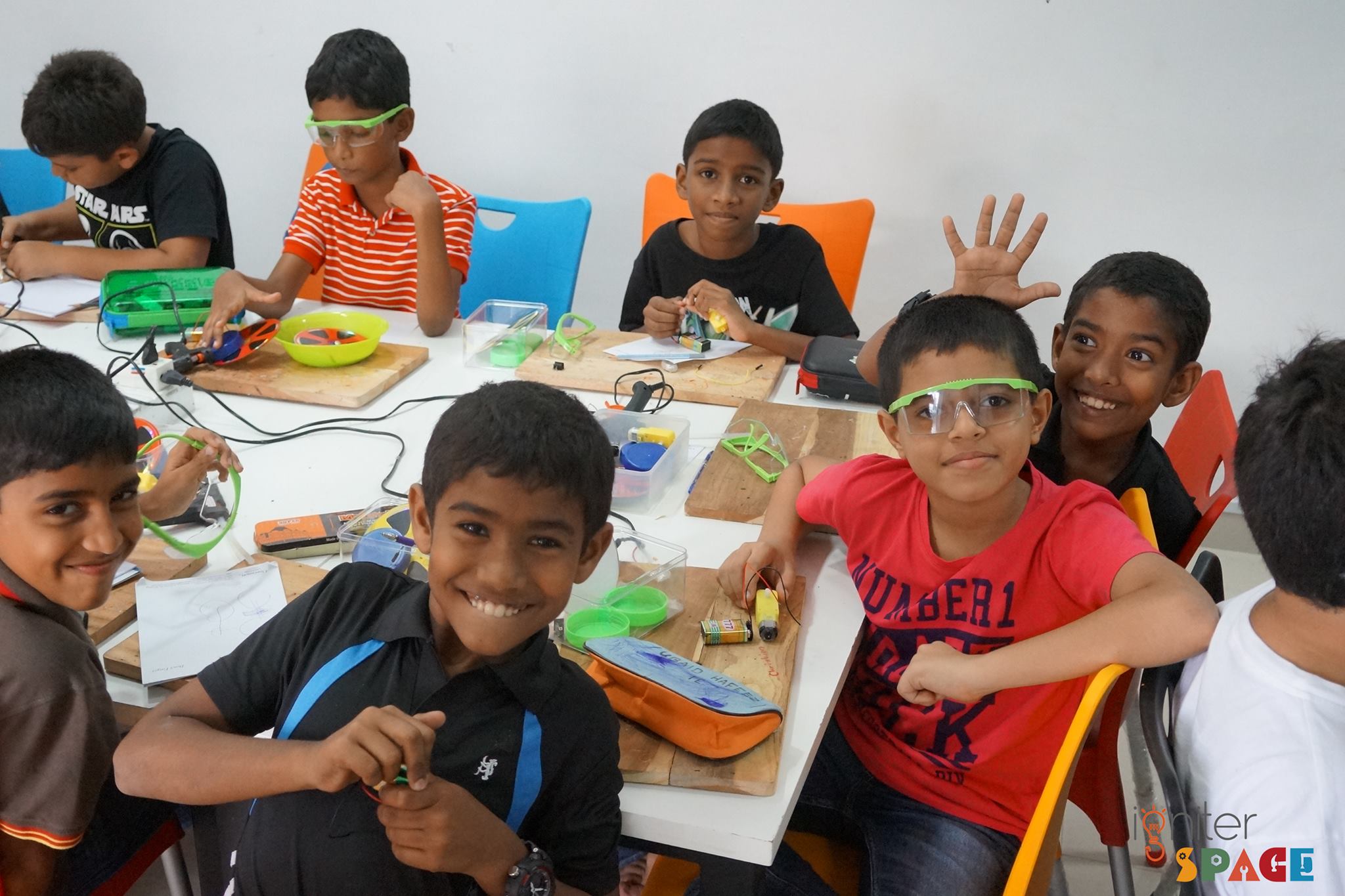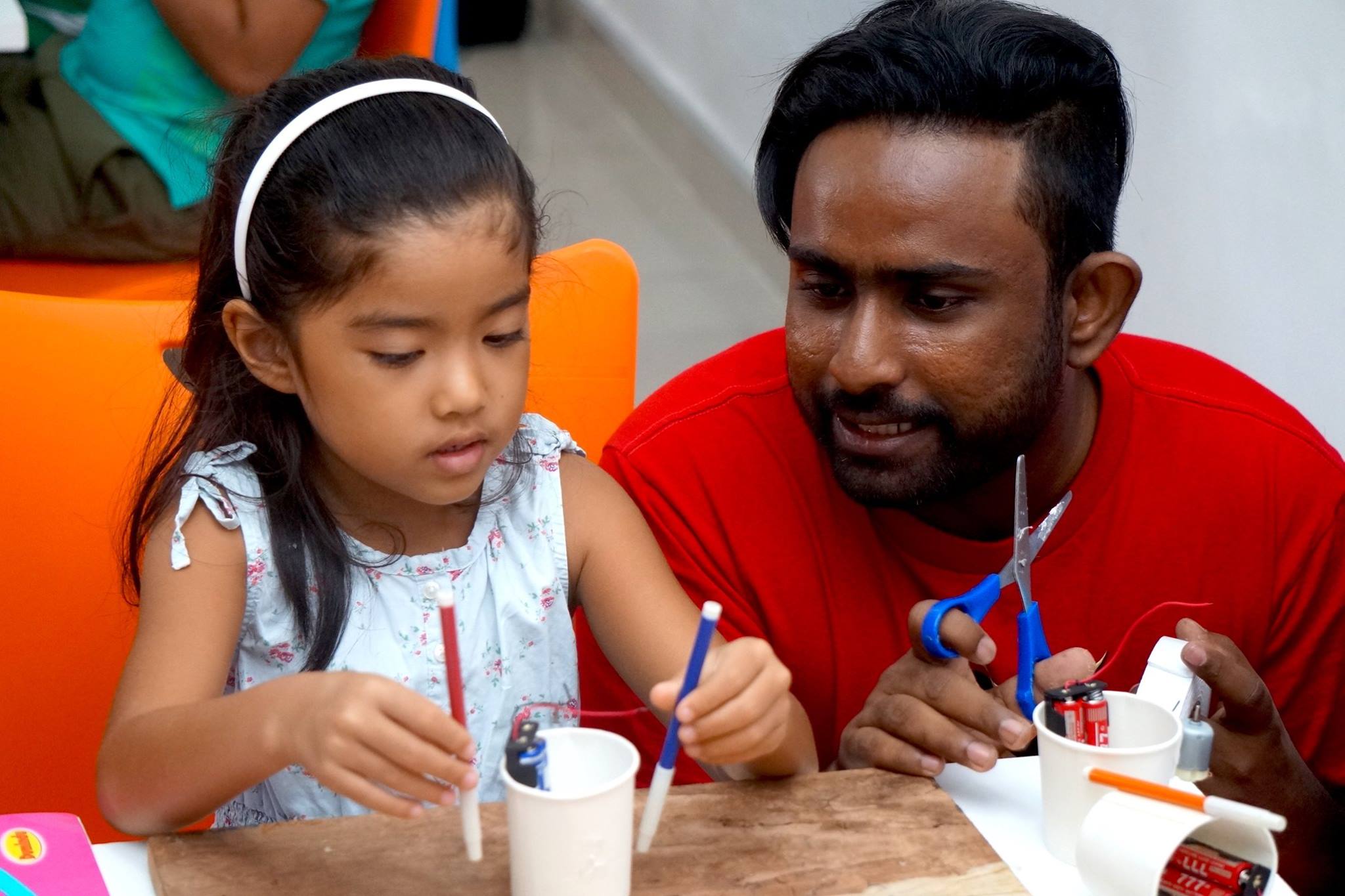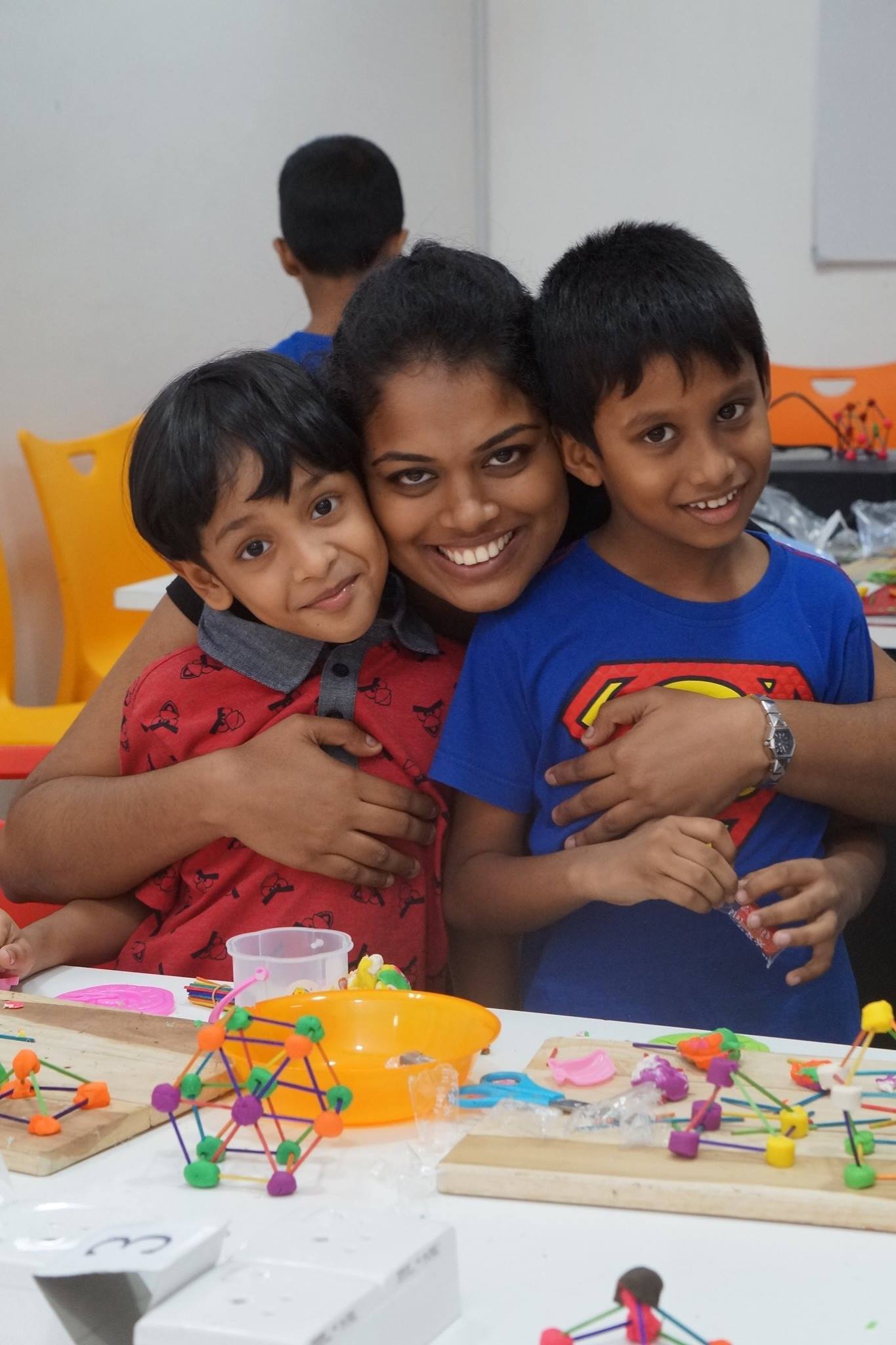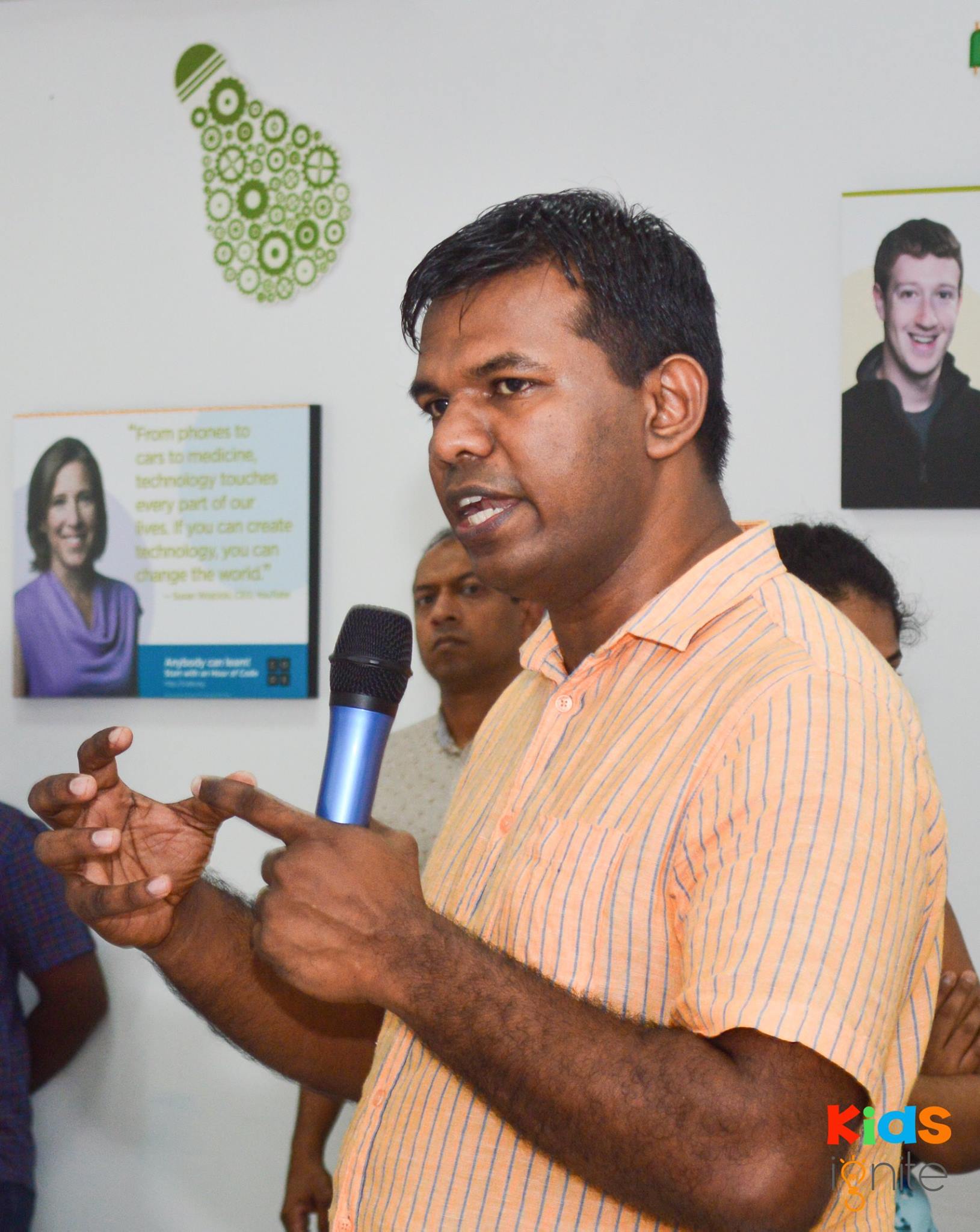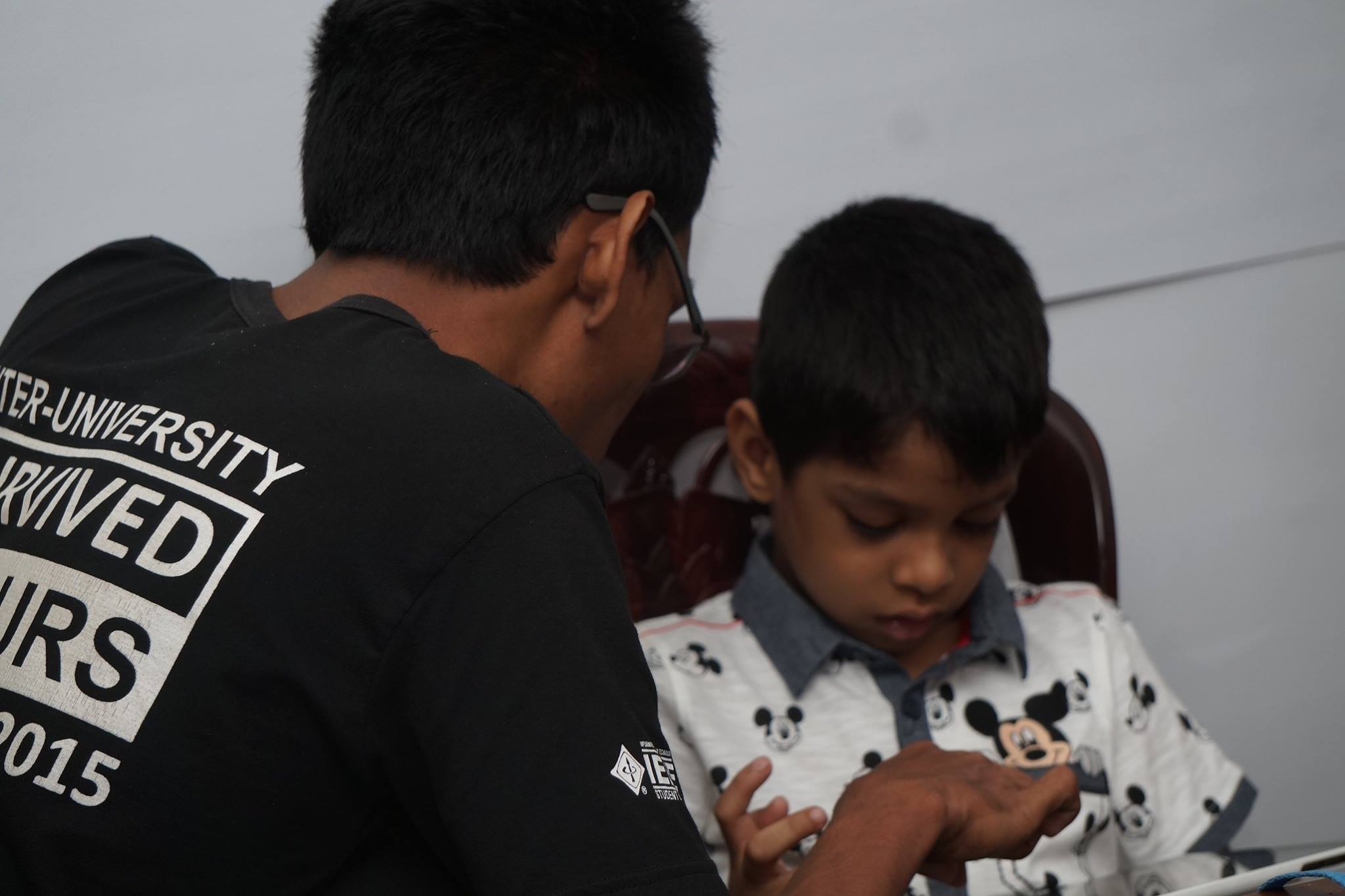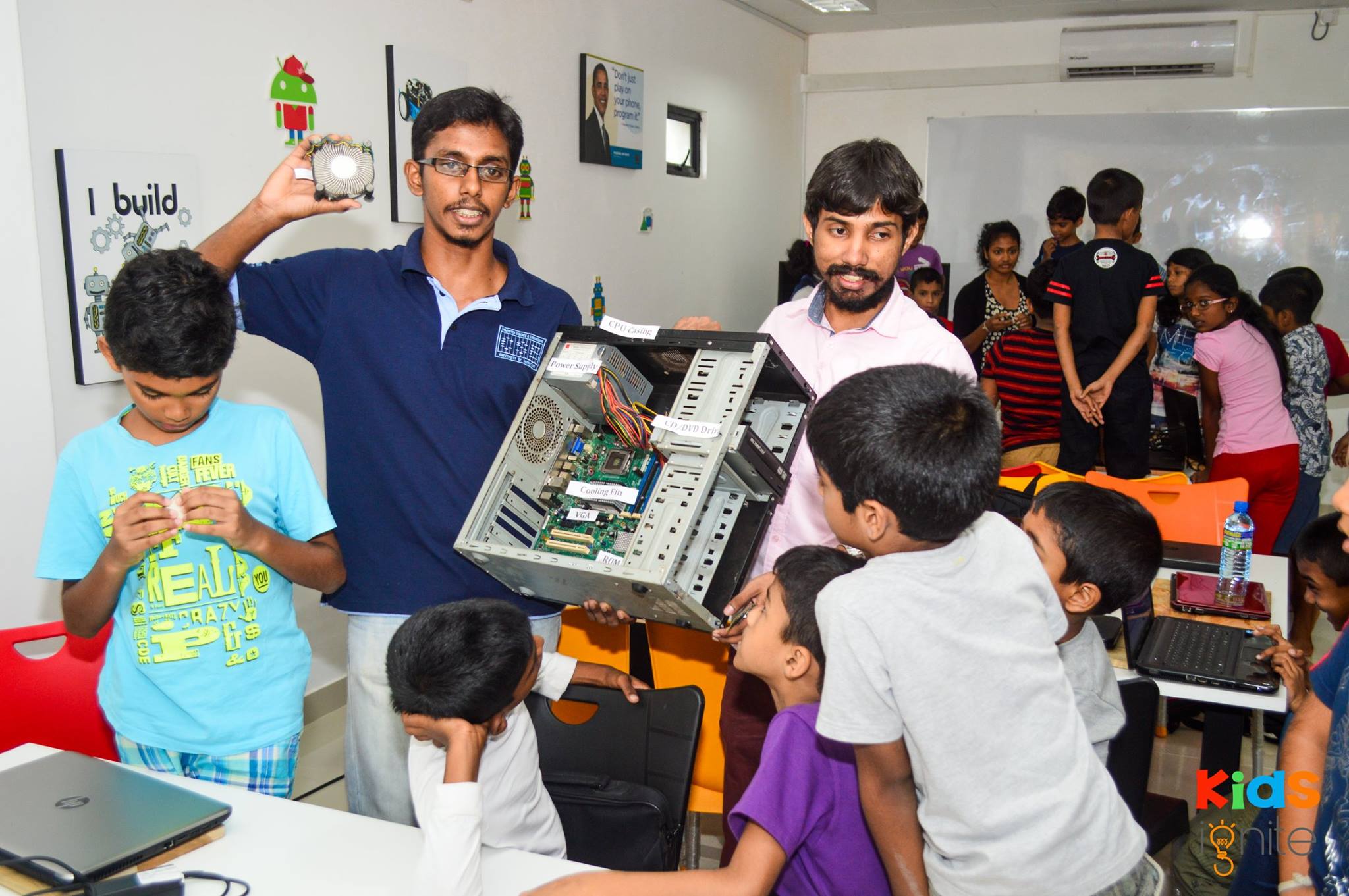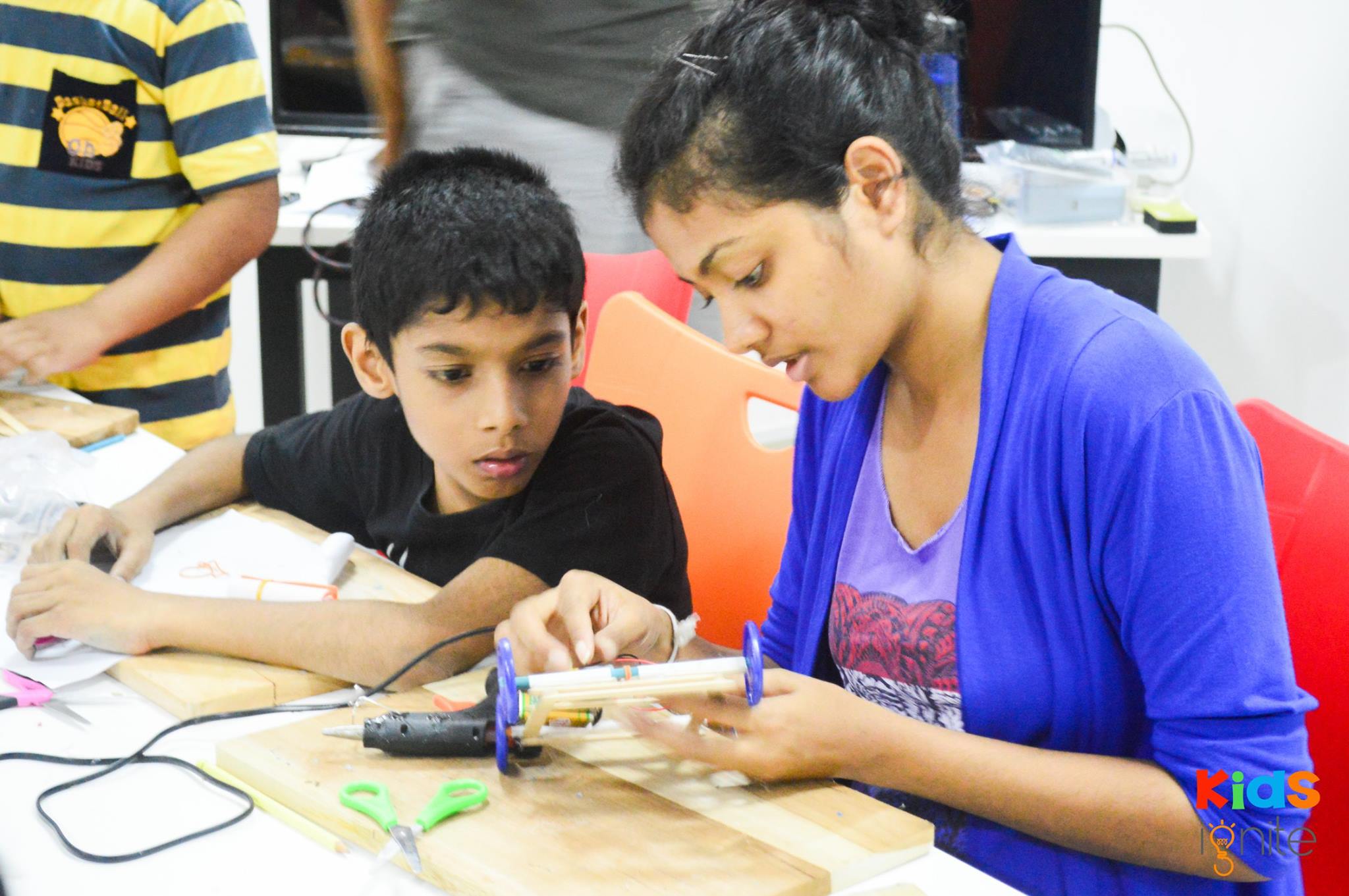When Achala asked me to help him out with an electronics class for kids, I didn’t know what I was signing up for. It was in June 2016 – I was free procrastinating uni work, and this seemed like a good distraction. I mean, it was kids. Plus electronics. Kids are fun(!). How hard could it get?
But no, oh no. Joining Igniter Space (formerly KidsIgnite) changed quite a few of things in my life, including some life goals. I’ve seen most, if not all, kinds of kids from angels to brats. I’ve had the chance to teach basic calculus & programming, and clean up snot. I’ve cuddled the cutest of kids, and had my hair pulled off with a plier.
Okay, a little background first for the less fortunate of you who haven’t heard about Igniter Space. Essentially, it’s a makerspace – a place where people gather and work on computing or other technological projects. From the outside, you’re forgiven for mistaking it for an electronics class.
Igniter Space is a place where children learn the basics of robotics, electronics, programming, mechanical engineering and other skills that make an engineer. They start off with carefully planned activities that make them familiar with small electronic components, basic concepts of computer programming, building mechanical structures and so on. While doing all this, they’re encouraged to make use of the knowledge they gather and build stuff on their own. Think it’s a little far-fetched? Try their Facebook page. The little minds have come up with things that will make you feel little.
So yeah, now that intros are done, back to my story. We have classes on weekends, and I am one of the instructors guiding the kids with their activities. On a normal day, I meet a group of 6 to 12 kids each from the Tech Beginner, Master & Leader classes. Oh okay, the title might be misleading but hey, I’m a responsible daddy. Numbers don’t matter if you take care of ’em all. I help them to understand the principles of machinery and coding that miraculously lands them a toy (or game) to take home at the end of the class.
The first thing to note here is that the children are encouraged to do the activity on their own. Let it be a vibrating Ladybird bug or the classic Atari Breakout block breaker game, it has to be their own work. But being the curious new followers of the path they are, the kids ask for our help more often than not. It could be for a tip on soldering the wires to the small vibro motor, or how to keep track of the blocks broken with a variable on Scratch – the programming tool we use. So we teach them where to heat up or what variables to use and watch them do it for themselves.
We make every effort to make sure the children understand what they’re doing, and most of them do. But due to karma or decisions of the divine being reigning supreme, not all kids are created equal. Some need a little push in the right direction. A lot do the activities with normal supervision and a question now and then. A few finish it early, and make modifications that make us go “wow, how did you come up with this?”
Looking around the table, I can see the hyper-intelligent, the curious, and the ones with special needs. We nurture them all. It’d have been a perfect, spiritually satisfying experience if not for the nagging voices that go “sir, can you help me with this?” every few milli seconds. Okay okay, I’m kidding. It’s not that bad. The beginners don’t ask a lot of questions. They usually wander off on their own trails of thought and build different things. At the end they’re shouting to each other saying his or her toy is the most beautiful or colourful. They want to prove they’re the best. Sounds familiar, parents? These little things love to pull my hair or t-shirt and get a comment on their progress.
The intermediate are the noisiest. Being curious pre-teens, they have a lot of questions about the mechanics, the electronics and the programming blocks in Scratch. Plus they’re keen on making friends with the other kids and exchanging ideas, or complaining when someone else copies their exact design. Copyrights are a thing with the coming generations.
And the elder children. They’re mostly teens with hints of growing self-esteem. Questions are comparatively rare, for they usually try to figure out things on their own – either because they don’t want to seem ignorant in front of others or because they truly desire the joy of self-discovery. Probably both. Most questions are quite intelligent too, usually asking about different outcomes if they change something here or there. Sometimes they come in front of the class and answer questions. I feel most connected with this group. I’m not exactly a saint with the beginner rug rats.
So yeah, I feel like a father teaching the wonders of the world while showing a kid how to light a bulb with a battery or make a ball move on a computer screen. There’s a special kind of satisfaction in seeing their faces go “oh” when comprehension strikes them hard. Juggling a full table of them is no small feat, and you’ve probably had a tinge of the experience if you’re a parent. Just a tinge, yeah. You didn’t cope with my lot.
My lot. Love em or hate em, I own a little piece of them. Now let me go thank my parents for putting up with this particular rascal.
